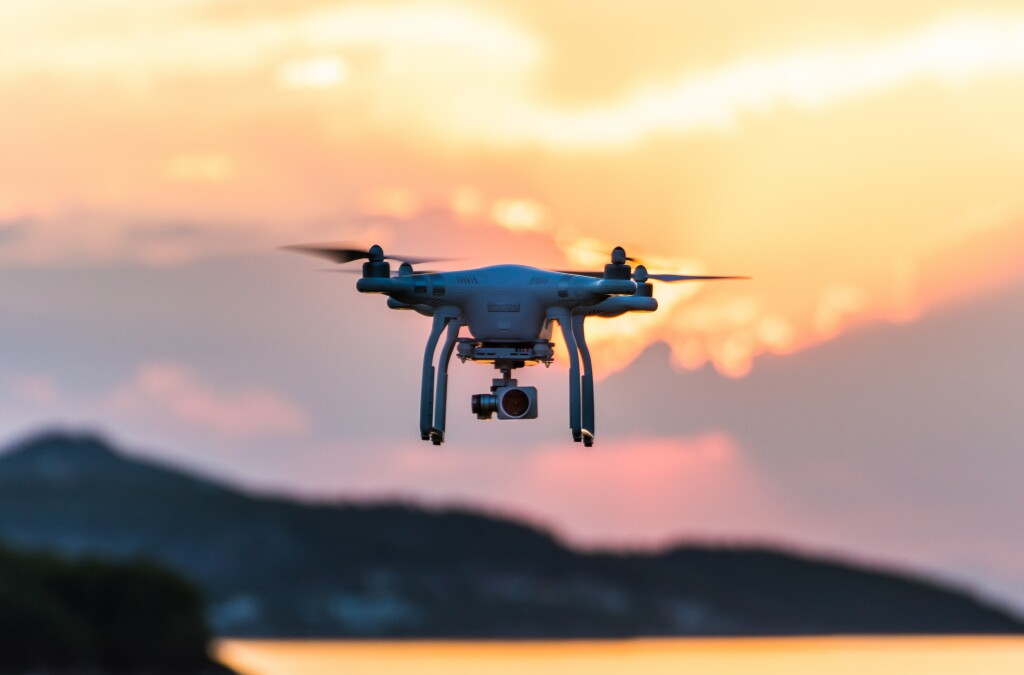It’s crunch time for any operator intent on seizing the highest value opportunities from the burgeoning unmanned aerial vehicles (UAVs) marketplace. Not only have capabilities soared – to enable increasingly advanced use cases – but global regulations have arrived to make sure drones are integrated safely into the world’s crowded airspace. The big question is a simple one: how to strike first to gain an advantage.
Perhaps not surprisingly, the answer lies in harnessing the right technologies. And for me, three areas that rely on cutting edge technologies stand out as being absolutely key: detect and avoid, critical communications and precise positioning for safe navigation. In this article, I’ll examine their importance to the evolving drone ecosystem and reveal how innovative approaches can help meet regulatory requirements in a way that allows solutions to scale to the highest value use cases. This will also be the topic of our webinar on May 18 – you can sign up here.
Let’s start with the opportunity. The increased interest in UAVs that we’ve witnessed in recent years shows no sign of slowing. Indeed, it is estimated that by 2035, the European drone market alone will generate value of €10 billion a year. As for regulations, the European Union’s framework launched in January will be followed by US Federal Aviation Administration rules that come into effect on April 21st. Both sets of regulations have the goal of integrating drones into our complex airspace while maintaining the necessary safety levels.
The EU regulatory methodology is based on the principle of a total system safety risk-based assessment model. It is used to evaluate the risks related to a given unmanned aircraft system (UAS) operation. Broadly speaking, this means that the regulation requires systematic solutions that are able to meet the regulations in a holistic way. There is much to get right in an industry that is characterised by an impressive safety record but where incidents can have catastrophic outcomes.
Unlocking the Value of BVLOS
The initial focus for companies should be on ensuring compliance with regulations for small-scale, pilot or proof-of-concept activities. But it’s really crucial they overcome the regulatory hurdles in a way that allows their solutions to scale. Take an exciting use case like beyond visual line of sight (BVLOS) operation for infrastructure monitoring. It will only start to drive real value if it can be done at scale with centralization of much of the operation. A future where multiple drones can be piloted from a single location, flying hundreds of miles beyond visual line of sight is thrilling – but can only be achieved by combining some of the very latest technologies. This is where much of the business value will lie within the industry. Failing to design scalability into a solution from the start can significantly hamper it further down the line, reducing the overall market opportunity.
Fortunately, this is an area where new technologies help and has been the focus of much of our work at Cambridge Consultants. Technology is used across industries to scale solutions, particularly in the face of regulation. This is true for social media companies, which are turning to AI and machine learning when attempting to moderate billions of posts a day. It’s also the case for online retailers that use robotic fulfilment technology and bespoke, real-time communications to allow operations to scale. Using technology to scale UAV solutions is just as applicable, so let’s explore the three technologies I believe to be vital to success.
Detect and Avoid Is a Key Function
While a reasonable amount of current regulation focuses on what are referred to as strategic mitigations (operating at certain times of day, or within certain location bounds), a good deal of it relates to tactical mitigations. These address the residual risk of a mid-air collision once strategic measures are in place. Detect and avoid (DAA) is a key function that can ensure UAVs are able to operate safely in a variety of environments.
In simple terms, DAA allows aircraft to sense the operating environment and use the information to avoid obstacles, including other aircraft. Key components of DAA solutions include the sensors and algorithms, which run on the compute platform. A holistic solution is likely to include inputs from a range of sensors such as cameras and radars, and possibly from external sources such as other UAVs or ground-based systems. These inputs then need to be fused so that the UAV has a good understanding of its environment and is able to safely manoeuvre within it.
One of the key challenges of DAA is the performance trade-off between performance and the cost, size, weight and power (CSWaP) of the solution. Off-the-shelf sensors are available which could be used for DAA but – depending on the use case being addressed – the CSWaP requirements may vary significantly. In a large number of cases, an off-the-shelf approach will not allow the creation of the most effective solution.
Critical Communications Provides Long-Range Robustness
Robustness is another key part of the regulations. The requirement here is to collect all the necessary technical information about the UAS and its supporting systems. Reliable, high performance wireless communications are therefore critical to effective long-range operation. Some of the key performance criteria for UAS communication systems are availability, update rate (bandwidth) and latency.
Operating long-range BVLOS missions in the highest risk categories requires high availability (possibly using multiple redundant systems), guaranteed access and low latency. Established communications technologies such as satcoms or cellular are therefore natural choices for mission critical comms but are yet to be standardised for specific use with UAVs. This presents an opportunity for network operators and the UAS industry is, in turn, driving the development of communication capabilities and standards. For example, the Aerial Connectivity Joint Activity (ACJA) is a collaboration initiative between GUTMA and the GSMA and is working towards ‘aerial profiles’ for cellular networks. These will build on some of the inherent properties of 5G required for UAS such as reliability, low latency (URLLC) and the capability to support many devices (mMTC).
In the meantime, private cellular networks have already been used successfully in industrial environments and Ground-to-Air aviation systems, with enhancements where necessary to meet the real-time performance and high-speed mobility requirements of their applications. Both long-range, highly reliable service provider networks and private network deployments are going to be key for future UAV operations. Operators need to understand all of the communication options so that they are able to select the optimal solution for their particular use case.
Precise Positioning for Safe Navigation Is a Must
Precise and reliable location for UAVs in all situations is essential for safe navigation and to meet the new regulations. GNSS (Global Navigation Satellite System) requires clear sky conditions to operate accurately. Even the effects of ‘urban canyons’ are enough to diminish performance in cities. Road and rail infrastructure data collection and inspection is a key use case for UAVs, and yet simply flying under a bridge deck can cause challenges with obtaining location via GNSS. Additionally, there is a security threat from malicious actors who are able to block GNSS signals or, even worse, spoof them to generate false location information.
Alternative location solutions are available, such as inertial navigation, but the real cutting-edge UAV solutions will use multiple data sources including cellular and WiFi signals, combined with onboard AI and machine learning to navigate safely in the absence of GNSS. This will allow significant redundancy to be introduced into systems, maximising the chance of safe, highly reliable operation.
The new regulations being introduced show the growing maturity of the UAV eco-system. Opportunities within this space are starting to become feasible and will offer real value for those which are able to meet the regulations. The technologies outlined here are key enablers for solutions which meet the new drone regulations in a way that allows solutions to scale. Companies that want to access the growing market, whether to enable new revenue streams or reduce the costs of their operations, need to consider how they will architect solutions and the role technology will play. The opportunity is there, who will grasp it remains to be seen.
To hear more, please join our webinar on May 18: "Scaling advanced drone operations – creating business value through innovation". We will explore the innovation making drone operations a reality in more detail. You will get to hear from two other leading companies – Iridium, the world's only truly global mobile satellite communications company, and Flylogix, who are transforming remote operations through unmanned aviation. It promises to be a fascinating webinar – I hope to see you there.













Comments